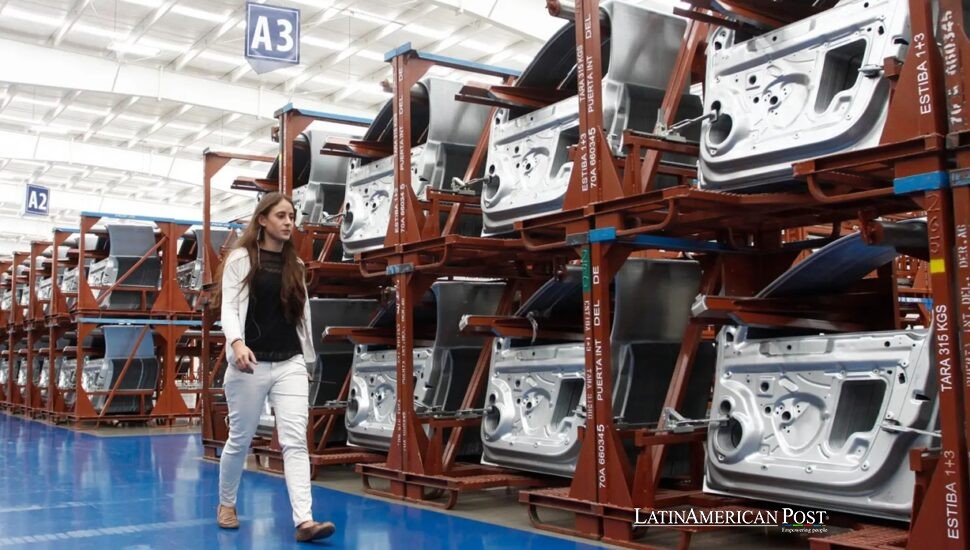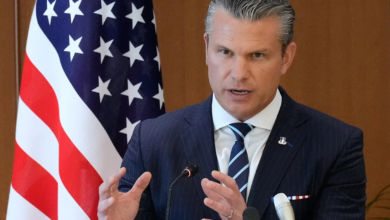Mexico's Auto Industry Faces Global High-Stakes Tariff Showdown

The U.S. will add a 25 % tax on Mexican vehicles starting February 1 if Mexico fails to stop enough fentanyl from crossing the border. A decision of this scale puts Mexico’s car industry at risk, along with thousands of factory jobs or consumer prices. The quick change also threatens both countries’ productive relationships built across multiple decades.
Mounting Pressure On Mexico’s Auto Sector
In recent months the Mexican auto industry faces challenges from U.S. President Donald Trump. The president stated he plans to add high tariffs on cars from Mexico. He states that Mexico’s leaders need to take more action to stop fentanyl flow into the U.S. Although Mexico had already faced challenges adapting to earlier shifts in North American trade frameworks, these new tariff threats introduce deep uncertainty to an industry that relies on free-flowing cross-border supply chains.
Why does this matter? Mexico’s auto sector has thrived on close integration with American buyers for decades. Roughly 90% of Mexico’s auto exports head north, according to the Mexican Automotive Manufacturers’ Association (AMIA). Affordable labor, specialized plants, and easy shipping routes have allowed Mexico to become a linchpin in the global automotive network. Automakers from Asia, Europe, and the U.S. invest heavily, counting on Mexico’s workforce to assemble millions of vehicles yearly, from small sedans to luxury crossovers. A tariff disruption could affect producers, dealers, or consumers across borders.
The critics say tariffs linked to Mexico’s work against fentanyl lack merit. Fentanyl reaches the U.S. through complex networks of criminals who use sea routes, air cargo as well as secret paths. The action to penalize Mexico’s auto sector – a central part of its real economy – does not lead to better control of drug trafficking. A 25 % tax on Mexican imports would damage diplomacy and intelligence cooperation and hurt U.S. firms needing Mexican supplies. The tax shows how national security needs clash with U.S.-Mexico production ties.
The White House sees strict taxes as a tool to gain power. Past events show that tax threats made Mexico change some policies or give up trade benefits. Some recall that in 2019, the specter of tariffs prompted Mexico to tighten migration enforcement along its southern border. This time, the push revolves around narcotics. The question: can Mexico pivot swiftly to dismantle fentanyl trafficking networks enough to satisfy U.S. concerns and avert punishing taxes on one of its largest export sectors?
Major Automakers Brace For Impact
Manufacturers from across the globe have massive investments in Mexico. A partial listing of the most affected:
Audi: In San Jose Chiapa, Audi employs over 5,000 people to produce the Q5 SUV. The factory exemplifies German automakers’ integration in Mexico, with nearly 176,000 units built in 2023 (and tens of thousands exported to the U.S. in 2024). A 25% tariff could inflate sticker prices for U.S. consumers, likely shrinking Audi’s sales in a crucial market.
BMW: The luxury carmaker operates a plant in San Luis Potosi, assembling the 3 Series, 2 Series Coupe, and M2. From 2027 onward, it will build the all-electric Neue Klasse line, solidifying Mexico’s role in BMW’s future EV strategy. Disrupted trade could stall this plan and undermine the return on billions of euros in capital expenditures.
Ford: One of the oldest American automakers in Mexico, Ford runs three facilities. The Chihuahua plant focuses on engines, while assembly plants in Cuautitlán and Hermosillo churn out vehicles for North America. Over 90% of exports head to the U.S., so tariffs could severely undercut Ford’s bottom line unless it shifts production. However, relocating assembly lines is neither cheap nor quick.
General Motors: Mexico is a critical hub for GM’s pickup trucks, mid-sized SUVs, and newly launched electric crossovers. The Silverado and Sierra are two of America’s best-selling trucks, some built in Mexico. GM’s local plants also produce battery-powered versions of the Blazer and Equinox, essential to the company’s EV ambitions. Slapping 25% tariffs on those vehicles could hamper GM’s ability to compete in the mid-priced segment stateside.
Honda: The Japanese automaker relies on Mexico to produce about 80 % of its cars for U.S. buyers. After concerns about high tariffs emerged, Honda must evaluate changes to its supply network or move some operations elsewhere. But a switch in production needs major funding and workers who match the expertise of Mexican employees.
KIA: KIA’s factory in Mexico builds the Forte sedan and Rio subcompact, plus some of Hyundai’s Santa Fe SUVs for the American market. The brand has gained ground in U.S. sales by offering competitive pricing. Extra tariffs could undermine that advantage, especially if consumers balk at costlier small cars.
Mazda: With around 120,000 vehicles a year shipped from its Mexican site to U.S. dealerships, Mazda has staked part of its distribution model on Mexico’s cost efficiency. An abrupt tariff might force them to reprice or scale back U.S. sales. The brand risks losing ground to domestic rivals if it can’t absorb the added cost.
Nissan: This Japanese giant has two Mexican factories, making popular models like the Sentra, Versa, and Kicks. They produced over 500,000 vehicles in the first nine months of 2024. The U.S. remains Nissan’s prime destination. A tariff hike would reverberate in dealerships nationwide, potentially pushing some consumers toward alternative models unaffected by the import tax.
Stellantis: Created from the FCA and PSA merger, Stellantis operates assembly lines in Saltillo (Ram pickups, vans) and Toluca (Jeep Compass). If these face 25% tariffs, the cost advantage of Mexican production might vanish. Meanwhile, Stellantis is trying to roll out new crossovers and SUVs. A hefty tax on cross-border shipments can disrupt these timelines, limiting model choices in the U.S. and diminishing profitability.
Toyota: The world’s largest automaker by volume, Toyota makes the Tacoma pickup at two plants in Mexico. With over 230,000 Tacomas sold in the U.S. in 2023, it’s a crucial piece of Toyota’s truck strategy. If tariffs inflate prices, Toyota might reroute production or lose ground in a hyper-competitive pickup market.
Volkswagen: The conglomerate’s Puebla plant is one of Mexico’s largest auto factories, churning out Jettas, Tiguans, and Taos crossovers for export. Producing nearly 350,000 cars in 2023, its importance to VW’s North American footprint is undeniable. Under a 25% levy, the brand would weigh passing costs to American shoppers or absorbing losses. Either route is painful, especially for manufacturers with EV transitions and fierce competition.
For each of these automakers, the potential damage goes beyond short-term dips in sales. Complex supply chains revolve around “just-in-time” parts deliveries, from engines to seats. Factories must keep inventory low to minimize costs. The supply chains cannot adapt quickly when money problems or transport barriers cause disruptions. With unclear details about Mexico’s ability to address or prevent tariffs, companies pause investment plans. A lack of confidence leads them to delay growth projects and the launch of new products.
Potential Disruption In Supply Chains
The deep integration of Mexican plants into the broader North American manufacturing network underscores how damaging new barriers would be. Thousands of components flow daily across the southern border. Many automakers rely on key parts stamped or molded in Mexico’s industrial hubs, which cross into the U.S. for final Assembly or distribution. A 25% tariff hits complete vehicles and may affect auto parts, engine subassemblies, transmissions, and more.
That risk extends well beyond the final showroom sticker price. Suppliers, from seat makers to electronics manufacturers, maintain large footprints in Mexico. For instance, Autoliv, the Swedish seat belt and airbag giant, employs some 15,000 workers in Mexican plants. Michelin has multiple facilities producing tires, crucial for final vehicle assembly lines. JAC Motors partners with local firm Giant Motors to create vehicles, leveraging cost-effective production. Finally, Yanfeng Automotive Interiors crafts seats, dashboards, or door panels for Toyota, GM, and others, all within Mexico.
Suppose these inputs become subject to a steep import duty. In that case, it might upset the cost structure for vehicles still finalized in the U.S. Some automakers might scramble to source components domestically, but building fresh plants or forging new supplier deals is neither quick nor cheap. Uncertainty alone can hamper investment as companies wait to see if the White House modifies its stance or Mexico steps up new anti-narcotics measures. Meanwhile, local plants brace for potential slowdowns in production if tariffs do indeed land.
Another undercurrent is Tesla’s rumored desire to expand in Mexico. Although earlier talk pinned hopes on a large assembly site or supplier network to feed Tesla’s operations, the uncertain environment around tariffs might dampen that enthusiasm. The EV maker depends on cost-effective supply lines and typically invests only where it sees stable policy frameworks. A 25 % tax on cross-border shipments could make Tesla reconsider its plan or ask for better deals from Mexican officials.
Overall, the threatened duties risk an abrupt fracturing of a supply system honed over decades. As cost burdens trickle down to retail prices, U.S. consumers could find themselves paying more for sedans, SUVs, and especially trucks. That inflationary effect hardly aligns with the administration’s repeated claims to protect American wallets. Meanwhile, the Mexican workforce—front and center in the “car country” identity—could face layoffs if exports contract. The impact on communities that need factory jobs affects many families and workers.
Seeking A Diplomatic Resolution
Despite the dire headlines, many automakers and policy experts remain hopeful that President Trump’s threats might be a negotiating tactic rather than a fixed decree. Past cycles have shown last-minute deals or partial exemptions, especially if Mexico demonstrates collaboration on security issues. The U.S. and Mexico share extensive intelligence programs and coordinated border operations, albeit with limited success so far in halting fentanyl distribution. A new strategy for cooperation could lead the U.S. to ease auto tariffs.
The diplomatic process stays active. Mexico’s officials know how vital cars are to their economy or focus on talks with the U.S. about drug control, NAFTA updates, and trade matters. Leaders explain that penalties on legal factories won’t solve the cartel issue. However, President Trump faces pressure to look firm at home, which makes deals to protect carmakers harder. Mexico’s leaders need to show action on safety without giving up control of their police work.
The car companies ask for patience and point out that a trade fight would hurt both countries. German producers like Volkswagen, next to Audi, note that costlier cars add to inflation or reduce sales. American companies—Ford, GM, and others—echo that sentiment, reminding the White House that they rely on Mexican facilities for profitable truck or SUV lines. The shared concerns about supply chains may lead to a deal: Mexico could increase its fentanyl checks or cooperate on security, and the U.S. could change its tariff demands.
A key doubt remains: Did U.S. leaders lose patience with small steps on drug control or decide that big actions push change? Such a stance points to a possible long dispute that would harm car sales. Previous events show that after the White House sets tariff dates, late changes remain possible but uncertain. Should February 1 come without meaningful progress, the White House might decide to proceed.
Corporate contingency plans range from absorbing part of the tariff to raising prices on American consumers, neither an ideal scenario. Some automakers could shift marginal production lines out of Mexico to avoid the levy, but that’s a lengthy and often prohibitively expensive process. If the dispute endures, some of Mexico’s auto sector could stagnate, losing expansions or new model allocations to other global sites—perhaps in Asia or, ironically, the United States. Over the long run, though, neither Mexico nor the U.S. truly benefits from halting cross-border synergy.
Industry observers highlight the broader trend of “nearshoring,” where automakers increasingly prefer Mexico’s proximity to the U.S. over far-off countries. Mexico’s allure stems from free trade agreements, a skilled workforce, and short shipping routes. Blanket tariffs undermine precisely those advantages. Additionally, the heavier the duties, the likelier multinational firms are to demand extra incentives from Mexico—whether in tax breaks, lower labor costs, or expedited permitting—to remain competitive. A decline in wages or job security would hurt communities that depend on car industry incomes.
The best path is a deal between nations – even though success appears less clear. Mexico plans to add checks at borders along with information exchange to reduce drug traffic. The U.S. administration could extend the deadline to verify better results. In an ideal scenario, the mere possibility of tariffs spurs deeper cross-border cooperation—some might call it a “silver lining” approach. The auto industry in Mexico faces uncertainty today. President Trump states that weak efforts against drugs could trigger 25 % tariffs. The results would affect car factories, parts makers, plus U.S. vehicle prices. A rise in costs at dealerships or layoffs appears probable. The debate continues whether he uses this as a tool in talks or plans changes in trade with Mexico.
Also Read: Verdi’s Artisan Bags Bring Colombian Craftsmanship Global Spotlight
In the bigger picture, these events illustrate the vulnerability of highly integrated industries to political whims. A once stable cross-border synergy, honed over decades of shared manufacturing, is at risk of fracturing, not due to direct commercial factors but because of overshadowing security disputes. For Mexico, the challenge is twofold: intensify efforts against fentanyl—no small feat—while defending a foundational component of its economic identity. For the U.S., blanket tariffs might provide short-term leverage but risk long-term harm to supply chains and consumer prices. Observers hope that rational heads prevail, forging a compromise that preserves the prosperity of Mexico’s automotive complex and fosters genuine progress on security cooperation.




